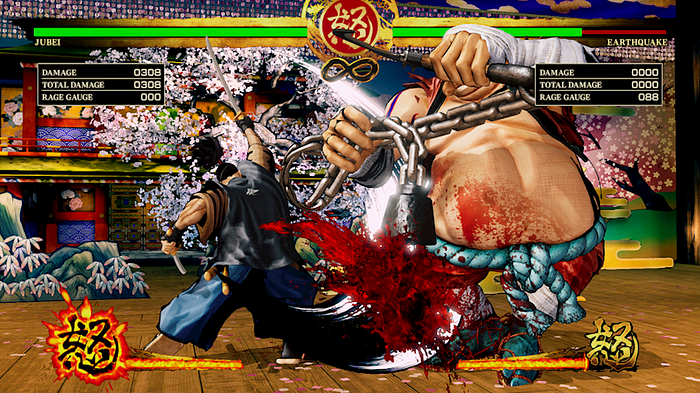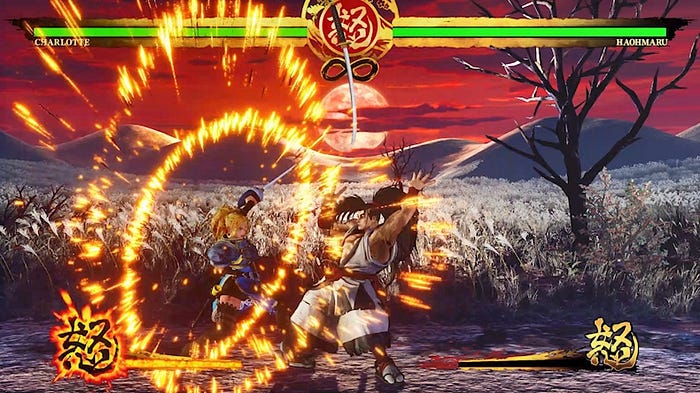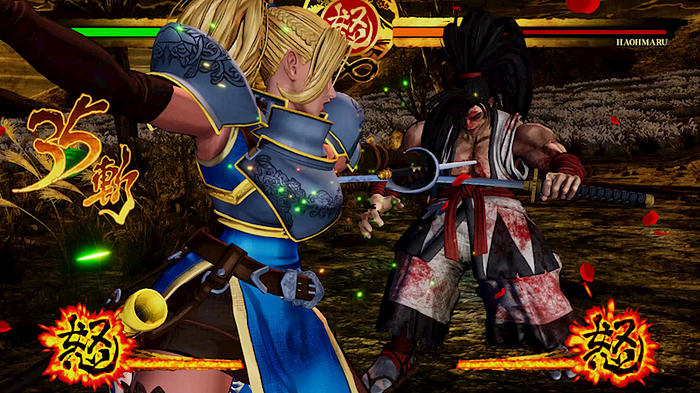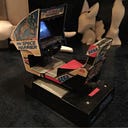Samurai Shodown review — the weight of the blade

This review is supported by my sponsors on Ko-fi. If you enjoy my work, please consider supporting it with either a one-time or a monthly subscription: sponsors get to read my work on Ko‑fi before anyone else.
I’ve always been strongly opposed to the idea that old video games are irrelevant. That “retro” is a surface-level novelty, that old game design holds nothing for us to learn from today, and that the new is inherently superior while the old is embarrassing and best forgotten. Considering the amount of buried treasure in our medium’s brief history, it’s always surprising to hear this from critics.
I say all this because Samurai Shodown is a retro game released in the year 2019. Its key influence is a 25-year-old game (Samurai Shodown II), to which it adds just a few of the bells and whistles that a 15-year-old game (Samurai Shodown V Special) came up with. In a time when everybody in fighting games is talking about modernization and simplification, Samurai Shodown comes to market almost entirely as it was in the 90s, no weaker for its age.
In fact, it is quite unlike any other modern fighting game, and its ideas are unique and relevant today as they were a generation ago.

Samurai Shodown was one of the first weapons fighting games, and it’s also one of the few that attempts to model the weight and the killing power of the blade as opposed to fisticuffs. Slashes feel heavy, and when blade clashes against blade, the combatants recoil from the impact. When a heavy sword strike hits its mark, stylized blood gushes forth, and time crawls to a stop as we take in the deadly swing. Sometimes it only takes two of those strikes to end a match. Compared to Samurai Shodown, a game of Soul Calibur or Guilty Gear looks like it’s taking place in zero gravity.
This reboot of Samurai Shodown — technically the seventh entry — understands that its appeal relies on maintaining that slow, steady, crunchy game feel. This is a series that once failed to modernize by moving into 3D and attempting to emulate Soul Calibur’s swift and airy movements. But Samurai Shodown isn’t about sword trails slicing through the wind: it’s about winding up, twisting forward, and chopping a tree trunk in two.

The new Samurai Shodown expresses those intense moments in the same way its Neo-Geo forbears did; with beautiful, stylized and nuanced animation. SNK’s artists and animators went through a hard transition from 2D to 3D, which you can witness from beginning to end in the excellent King of Fighters XIV. But that trial by fire built them into 3D artists capable of delivering work as vivid and detailed as their vintage 1990s sprite art. The character models look inked onto the screen in brush strokes, and in motion they breathe with the personality that made these characters cult favorites. The colorful, meticulously detailed backgrounds prove that violent video games don’t have to be illustrated entirely in shades of grey and brown.
The cast is mostly taken from the classic games, a smart choice given the wide variety of character types they offered. With standard Ryu and Ken (but samurai) types, a French fencer, a number of ninja (including one who’s about nine feet tall and 1400 pounds), and oddballs like a fighting kabuki actor, there’s a lot of character here and a wide range of unique play styles to choose from.
The new characters are fun and modern without breaking aesthetic: a crow-themed (and very chuunibyou anime-styled) samurai, a rough lady pirate wielding a giant saw, and a clumsy feng-shui mage. Each of them offer a unique play style and, for the benefit of beginners, feature drastically shorter and simpler move lists. By contrast, the characters from the 90s games play just like they did in the past. Though they’ve been smoothed out a bit, many of the infamous SNK special move commands return, and the game demands much more precise inputs from the player than any other contemporary fighting game.
Regardless of who you choose to fight as, the fighting experience is very different from any modern fighting game. (Aside from the overlooked Koihime Enbu, there are no “Samsho-alikes”.) Most of the fighting games out right now are about applying offensive pressure: you attack in a barrage of blows, or you throw out quick jabs and pokes that push the initiative in your favor. You establish an advantage and you stay on top of it, holding down an opponent who has little choice but to block as you try to push through their guard.

Samurai Shodown flips that on its head: it’s a game that focuses more on defending, reacting, and punishing opponents who leave openings. Block an attack, and your enemy recoils from the impact. The bigger the hit and the more precise the guard, the more they recoil, leaving them open to progressively larger counter-attacks. This may be a game where a single strike can take half of a fighter’s life away, but it also boasts robust options to defend against that strike. Players can dodge, parry, and even catch the opponent’s blade with one’s own bare hands, a turnabout as risky as it is satisfying.
Rather than indulge in a complex combo system or advanced systems, Samurai Shodown focuses intensely on the basics of combat, the stage where players are simply pacing back and forth and throwing out jabs; what advanced players like to call “neutral” play. Characters walk slowly, but they strike fast and hit hard, making jockeying for position much more deliberate and intense than in Street Fighter. Players test each other and seek out any opening to make a strike, whether it’s an attack out of range, a bad jump, or a failed special move. With heavy strikes that do high damage, leaving yourself unopened for so much as a quarter second can lead to instant death. Knowing that death is so close leads to intense matches where players take the utmost care in their defense, but in a moment bet their lives on a single strike.

Speaking of death, there is a bit of blood and gore. But rather than pursuing the late series’ progressively grosser death animations or the elaborate serial-killer fantasies of modern Mortal Kombat, this reboot restrains even the violence to the 90s level. As in the old games, the final slash of a match often triggers a simple animation in which the loser is cut clean in half, Looney Tunes style. Stylistic blood punctuates the impacts and stains both the battleground and the characters’ bodies over the course of each round without getting excessive. The especially squeamish can turn off blood and death animations altogether, cleaning up the game at the cost of a bit of its atmosphere.
One thing that hasn’t changed for the better in 20 years, unfortunately, is SNK’s online play. SNK has always lagged behind competitors in this department, and online matches are noticeably laggier than in comparable games. Even under optimal conditions, players have little time to defend and react, which is a lot of what this game is about. This is something that can be fixed in the future — to the extent that the speed of light allows for, anyway — but we’ll see if it will be.

Nothing I’ve described here is exactly “new”. The designers of Samurai Shodown believe in their game as it is. They start not from the idea that Samurai Shodown must be fixed, but that Samurai Shodown is already good. And they’re right. It still works. For old fighting game hands, it’s refreshingly easy to pick up with no loss of depth. For the less experienced, it offers instant gratification, cutting to the core of the genre — a tense battle of wits, in which a moment’s hesitation can get you cut down in the flash of a blade.
